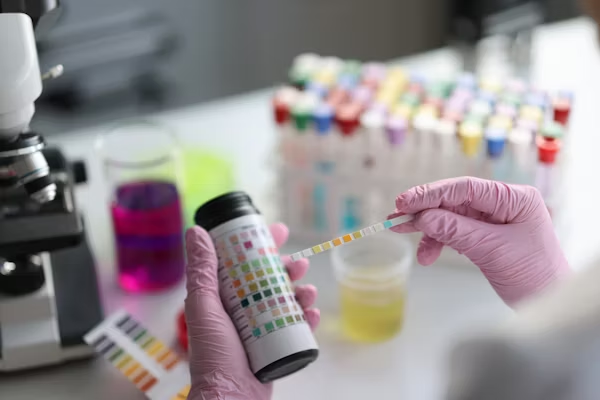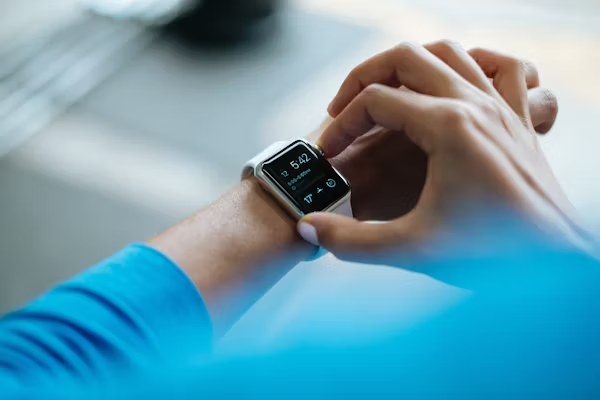7 Ways to Manage Lab Test Anxiety and Overcome Fear of Unknown Lab Results.
Sweaty palms. Racing heartbeat. Cold feet. The moment you see that lab test appointment on your calendar, your body goes into full alarm mode. You’re not alone in feeling this way.
Lab test anxiety affects up to 63% of people, with fear levels averaging 5.7 out of 10. That overwhelming urge to cancel your appointment? Those spiraling “what if” thoughts? These are completely normal responses to uncertainty and feeling out of control.
Here’s the good news: you overcome those feelings. In this blog post, we’ll explore why lab tests trigger such intense feelings and share seven proven strategies to help you approach your next test with confidence instead of dread. When you have the right tools, those sweaty palms become steady hands ready to take charge of your health.
Why Lab Tests Trigger So Much Anxiety
Your body’s alarm system responds to lab tests like any perceived threat. When you think about needles, unknown results, or loss of control, your brain doesn’t distinguish between real and imagined danger. It simply triggers a full stress response.
The emotions run deeper than just needle fear. Studies show people experience worry about results, anticipation of pain, and embarrassment about health concerns. These create a perfect storm of anxiety that makes routine blood draws feel overwhelming.
The Silent Stressor: Fear of the Unknown In healthcare
The most powerful driver of lab test anxiety is “intolerance of uncertainty.” Your mind struggles with unpredictable situations. In healthcare, uncertainty lurks everywhere: What will the test feel like? What might the results reveal?
People with high uncertainty intolerance often imagine worst-case scenarios. Your brain fills knowledge gaps with fears rather than facts, creating a worry cycle that’s hard to break without the right strategies.
Understanding the Fear Behind Lab Tests
What’s Really Causing Anxiety?
Fear of Pain or Needles: Needle phobia affects 3.5% to 10% of people, with some regions reporting rates up to 36.5%. Even minimal discomfort anticipation creates significant anxiety.
Past Trauma: Previous negative medical experiences condition your mind to associate lab tests with danger. These memories create powerful associations your nervous system remembers.
Fear of Diagnosis: The possibility of concerning news can feel overwhelming. Sometimes fear of knowing becomes so intense people avoid necessary medical care.
Loss of Control: Clinical environments make people feel vulnerable. Sterile atmospheres and formal procedures intensify feelings of powerlessness.
How Anxiety Affects Your Experience
Anxiety creates real physical changes that impact comfort and potentially results. Stress hormones like cortisol and adrenaline cause increased heart rate, elevated blood pressure, and sweating.
These symptoms can influence certain test results. Elevated cortisol affects hormone tests, while anxiety-induced high blood pressure can lead to misinterpretation of your health status.
What to Expect During a Lab Test: A Walkthrough for Patients
Step-by-Step Process
- Check-In: Staff verify your identity and complete paperwork. This safety step ensures proper sample tracking.
- Brief Wait: Use this time for relaxation techniques rather than building anxiety.
- Sample Collection: Trained professionals explain procedures and answer questions. Most collections take just minutes.
- Aftercare: You may apply pressure to blood draw sites or wait briefly before leaving.
- Results: In-hospital results available within 3-6 hours; external labs take several days.
Common Test Types
- Blood Draws: Quick needle stick, usually in the arm. It takes less than five minutes.
- Urine Tests: Provide sample in sterile container following clear instructions. Completely painless.
- Swabs: Gentle cell collection for throat, nasal, or wound cultures. Brief and mildly uncomfortable.
Who You’ll Meet: The Role of the Phlebotomist or Technician
Phlebotomists are trained professionals who specialize in drawing blood and ensuring your comfort and safety .
Lab Technicians may collect other types of samples and are responsible for analyzing them in the lab .
Both roles require certification and are dedicated to making the process as smooth and reassuring as possible
Is It Painful? What It Really Feels Like
Most patients report only mild discomfort. Blood draws feel like quick pinches lasting seconds. Serious pain is rare, and staff are trained to minimize discomfort.

Tip 1: Mentally Prepare Before the Test
Get Informed: Patient education powerfully reduces anxiety.
Ask your doctor: Why is this test needed? What does the procedure involve? How will I get results? Understanding your test’s purpose transforms it from scary unknown to valuable health tool. Know logistics too: fasting requirements, arrival time, appointment duration.
Practice Visualization: Mental rehearsal prepares you for successful experiences. Visualize walking confidently into the lab, interacting positively with staff, handling procedures calmly. Make mental practice detailed: imagine sights, sounds, smells, but always with you feeling calm and controlled.
Tip 2: Use Relaxation and Breathing Techniques
Deep Breathing Control: When anxious, breathing becomes shallow and rapid, maintaining stress response. Conscious slow, deep breathing activates relaxation response.
Try this: Inhale through nose for four counts, hold for four, exhale through mouth for six. Repeat several times, making exhales longer than inhales.
Quick Physical Techniques
Hand Warming: Hold something warm to relax muscles and provide comfort.
Progressive Muscle Relaxation: Tense then release each muscle group from toes upward.
Tip 3: Reframe Anxious Thoughts
Challenge Worst-Case Scenarios
Recognize when you are catastrophizing and challenge those thoughts. Ask: “Is this helpful? Based on facts or fears?” Replace “Something terrible is wrong” with “I’m taking responsible health steps.”
Most tests are routine. Worrying won’t change outcomes, but taking action will.
Use Affirmations
Develop calming statements: “I’m caring for my health,” “I can handle this step by step,” “Feeling nervous is normal, but I’m safe.” Choose authentic, meaningful affirmations and practice regularly for ready availability.
Tip 4: Bring Distractions and Positive Inputs
Prepare a Distraction Kit
Bring headphones for music or podcasts, a book, or a small fidget item. Distraction techniques are proven to reduce anxiety and pain, especially in medical settings. Distraction techniques reduce anxiety and pain perception. Choose engaging but not absorbing content so you’ll hear your name called.
Limit Online Searches
Resist the urge to search symptoms or test results online, as this often increases anxiety rather than providing clarity. Set boundaries around health-related internet searches, especially before tests.
Tip 5: Lean on Support Systems
Connect with Others
Talk to friends, family, or support groups who understand your experience. Others’ successful navigation provides comfort and perspective.
Ask trusted people about their lab experiences. Most felt nervous and can share helpful coping strategies.
Communicate with Healthcare team
Let staff know you’re anxious. They’re trained to provide reassurance and can adjust approaches: lying down during draws, extra time, step-by-step explanations.
Healthcare professionals see anxious patients regularly and want positive experiences for you.
Tip 6: Focus on Control While Waiting for Results
Create Waiting Routines
While waiting for results, establish a routine that includes:
Staying hydrated
Light exercise
Rest and self-care activities
These practices can help reduce anxiety and keep you grounded
Tip 7: Seek Professional Help if Needed
When to Get Support
Seek help if anxiety interferes with daily life, causes medical care avoidance, or leads to panic attacks. Other signs: persistent worry unresponsive to self-help, physical symptoms like insomnia, avoiding all medical care due to fear.
Lab test anxiety is incredibly common, affecting the majority of patients at some point in their healthcare journey. Those racing hearts, sweaty palms, and worried thoughts are normal responses to uncertainty and perceived threats. But as we’ve explored, anxiety doesn’t have to control your healthcare experience.
Remember to be compassionate with yourself throughout this process. Managing anxiety is a skill that develops over time, and each test you complete successfully builds your confidence for the next one. Whether you’re using breathing techniques in the waiting room, practicing positive self-talk during procedures, or seeking support from your healthcare team, you’re taking active steps toward better health management.
If you’re tired of letting lab test anxiety control your healthcare decisions, you don’t have to face it alone. Lab2Doctors specializes in bridging the gap between physicians and their patients, providing personalized support that helps you feel informed, prepared, and confident throughout your entire lab testing experience.
Our team understands that knowledge and preparation are your best allies against anxiety. We guide you through every step of the process, from understanding why your test was ordered to interpreting your results in plain language you can understand.
Are you ready to transform your lab test anxiety into healthcare confidence? Contact Lab2Doctors today to learn how our patient support services can help you approach your next test with calm and clarity.
latest video
news via inbox
From regulatory updates to cutting-edge technology, we've got you covered.






